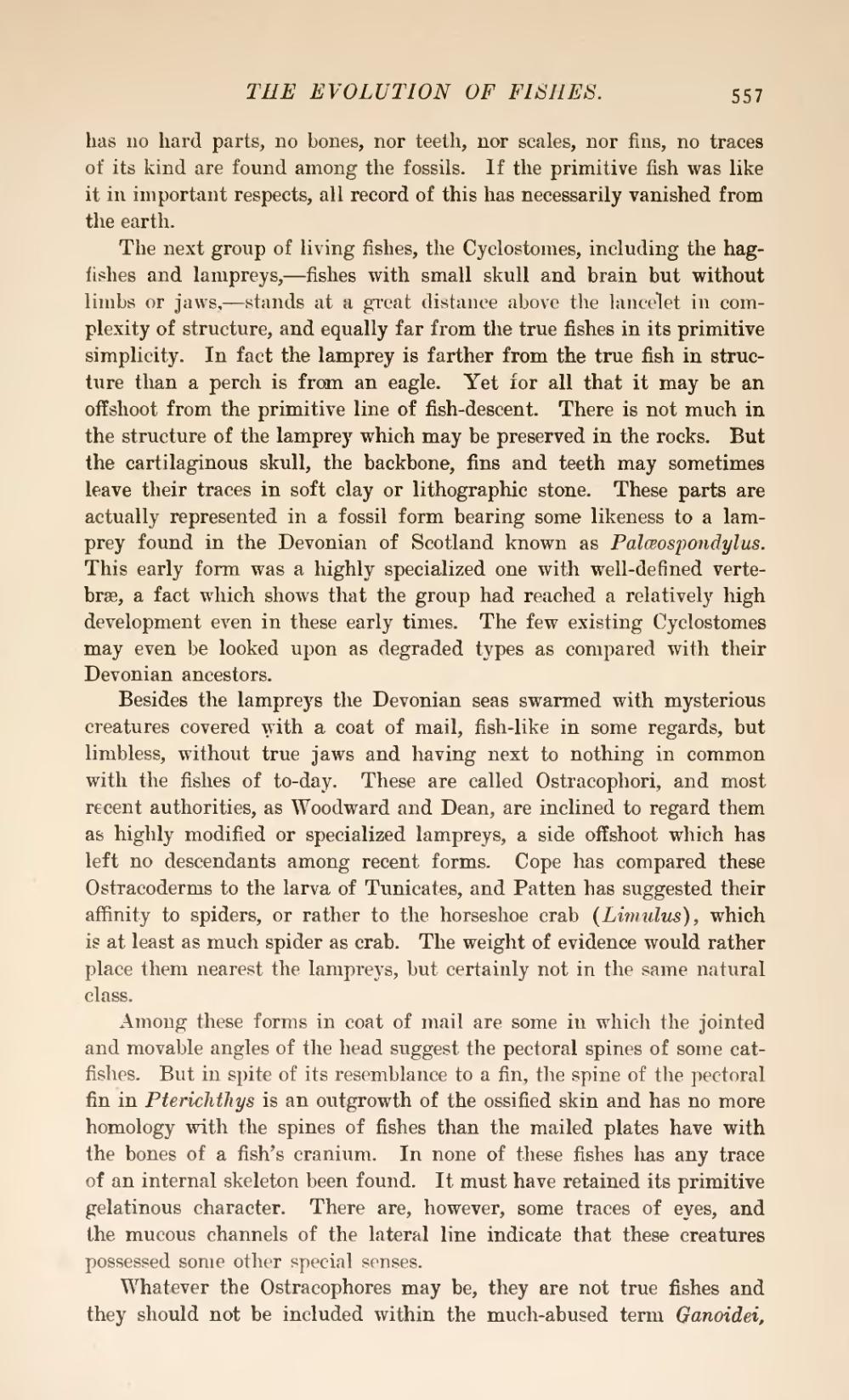has no hard parts, no bones, nor teeth, nor scales, nor fins, no traces of its kind are found among the fossils. If the primitive lish was like it in important respects, all record of this has necessarily vanished from the earth.
The next group of living fishes, the Cyclostomes, including the hagfishes and lampreys,—fishes with small skull and brain but without limbs or jaws,—stands at a great distance above the lancelet in complexity of structure, and equally far from the true fishes in its primitive simplicity. In fact the lamprey is farther from the true fish in structure than a perch is from an eagle. Yet for all that it may be an offshoot from the primitive line of fish-descent. There is not much in the structure of the lamprey which may be preserved in the rocks. But the cartilaginous skull, the backbone, fins and teeth may sometimes leave their traces in soft clay or lithographic stone. These parts are actually represented in a fossil form bearing some likeness to a lamprey found in the Devonian of Scotland known as Palæospondylus. This early form was a highly specialized one with well-defined vertebrae, a fact which shows that the group had reached a relatively high development even in these early times. The few existing Cyclostomes may even be looked upon as degraded types as compared with their Devonian ancestors.
Besides the lampreys the Devonian seas swarmed with mysterious creatures covered with a coat of mail, fish-like in some regards, but limbless, without true jaws and having next to nothing in common with the fishes of to-day. These are called Ostracophori, and most recent authorities, as Woodward and Dean, are inclined to regard them as highly modified or specialized lampreys, a side offshoot which has left no descendants among recent forms. Cope has compared these Ostracoderms to the larva of Tunicates, and Patten has suggested their affinity to spiders, or rather to the horseshoe crab (Limulus), which is at least as much spider as crab. The weight of evidence would rather place them nearest the lampreys, but certainly not in the same natural class.
Among these forms in coat of mail are some in which the jointed and movable angles of the head suggest the pectoral spines of some catfishes. But in spite of its resemblance to a fin, the spine of the pectoral fin in Pterichthys is an outgrowth of the ossified skin and has no more homology with the spines of fishes than the mailed plates have with the bones of a fish's cranium. In none of these fishes has any trace of an internal skeleton been found. It must have retained its primitive gelatinous character. There are, however, some traces of eyes, and the mucous channels of the lateral line indicate that these creatures possessed some other special senses.
Whatever the Ostracophores may be, they are not true fishes and they should not be included within the much-abused term Ganoidei,
